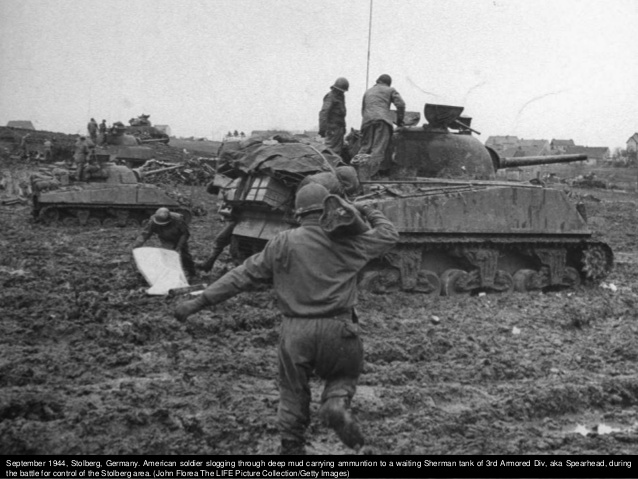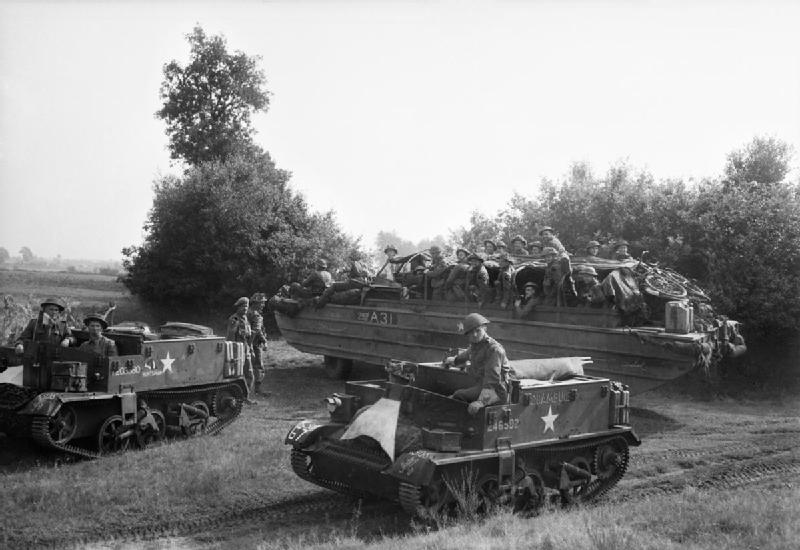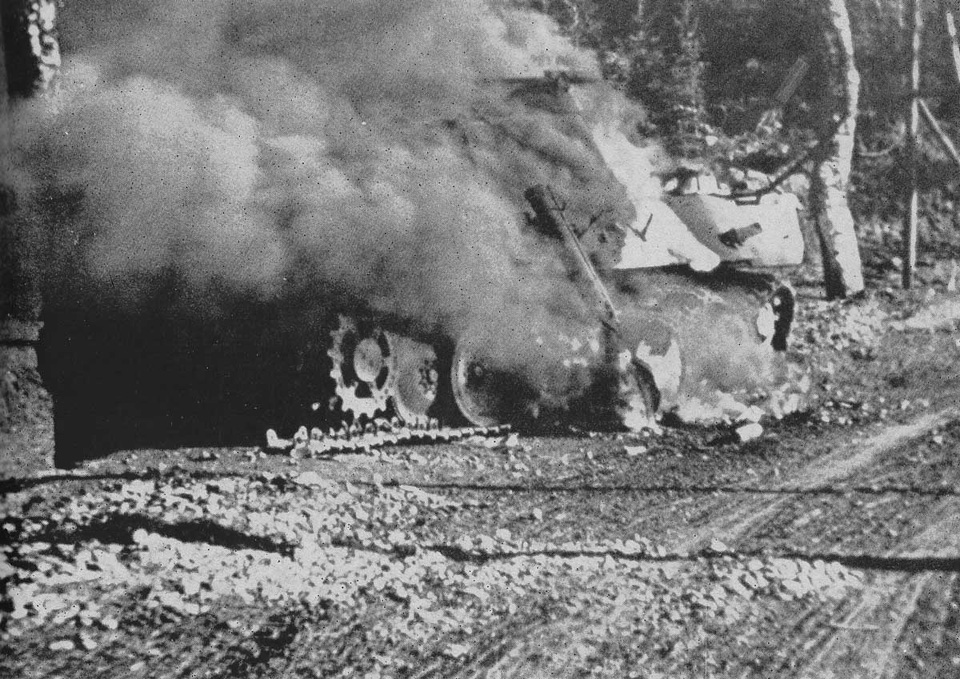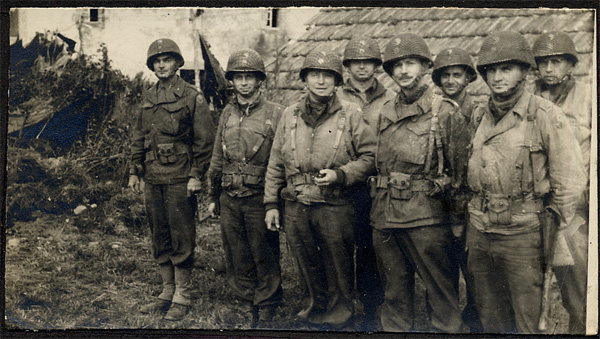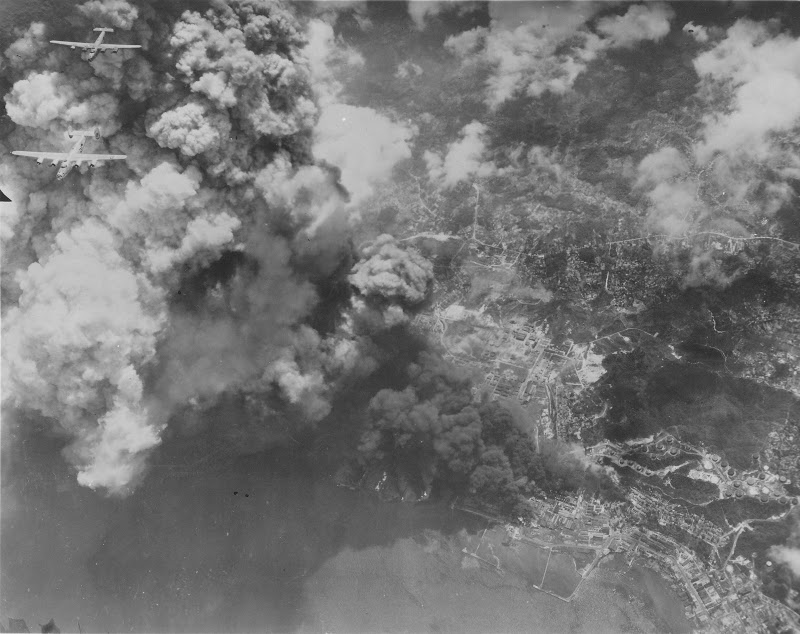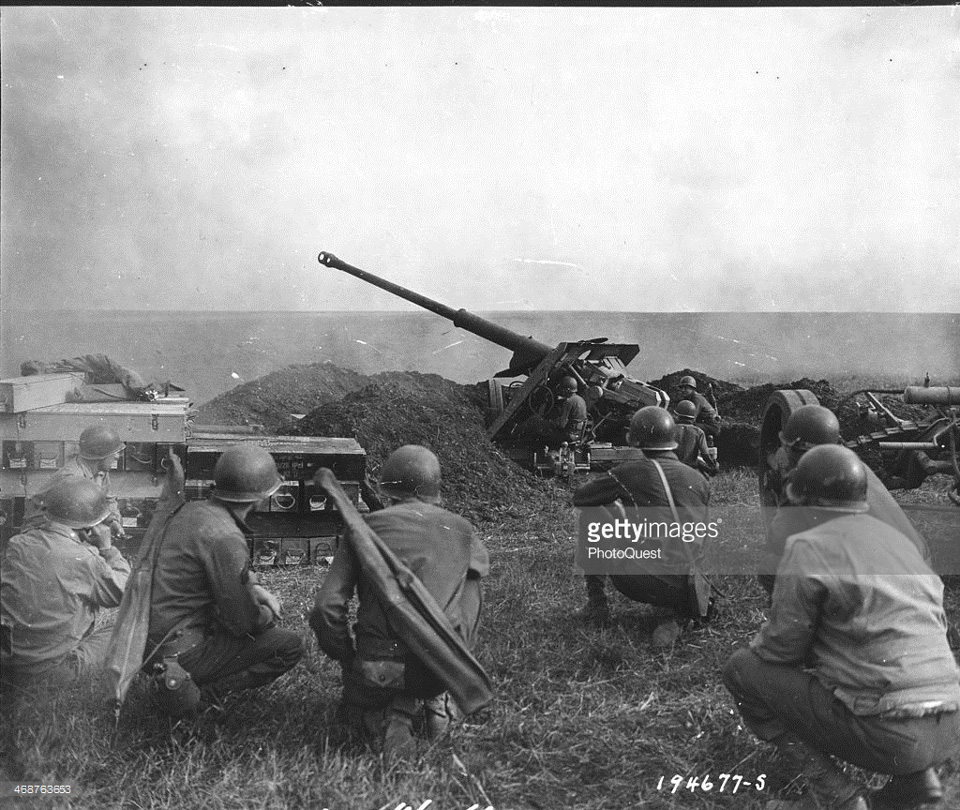Air Operations, Carolines
11th Heavy Bomb Group B-24s based in the Marshall Islands attack the Truk Atoll.
[Air Operations, CBI
BURMA- 11 10th Air Force B-25s attack antiaircraft emplacements, a bridge, and a bypass on the Burma Road at Uamhkai.
- 24 341st Medium Bomb Group B-25s attack the Tienho and White Cloud airfields at Canton.
- 15 B-25s attack targets of opportunity around Chuanhsien.
- 11 B-25s attack Mangshih.
- 14th Air Force fighter-bombers mount nearly 100 effective sorties against troops and numerous transportation targets throughout east-central China south of the Yangtze River.
- 18 7th Heavy Bomb Group B-24s transport fuel from India to three locations in China.
- During the night, 9 341st Medium Bomb Group B-25s attack the White Cloud and Tienho airfields at Canton.
Air Operations, East Indies
- FEAF B-24s attack the Haroekoe airfield on Ceram, the Kendari airfield on Celebes, and the Liand airfield on Amboina.
- B-25s attack the Namlea airfield on Boeroe.
Air Operations, Europe
The Russians fly their last missions to drop supplies for the Poles in Warsaw. In 10 nights of airlift operations, the Red Air Force has flown 2,500 sorties in support of the Warsaw garrison and delivered 50 tons of munitions and food.
RAF BOMBER COMMANDDaylight Ops:
Minor Ops:
- 3 Lysanders are on Resistance operations, 72 Halifaxes are on fuel-carrying flights and there are 5 aircraft on RCM sorties.
- 1 Lysander is lost.
Minor Ops:
- 40 Mosquitos are sent to Karlsruhe, 15 Lancasters lay mines in the Kattegat and off Heligoland, and there are 42 Mosquito patrols and 25 RCM sorties.
- There are no losses.
FRANCE:
- 190 8th Air Force B-24s transport fuel supplies to France.
ETO:
- During the day, 9th Air Force fighters and fighter-bombers complete more than 1,500 effective combat sorties.
- More than 400 9th Bomb Division B-26s and A-20s attack antitank barriers at Webenheim; marshalling yards and rail sidings at Bingen; Euskirchen and Prum; warehouses, barracks, rail sidings, and marshalling yards at Bitburg and Julich.
ITALY:
- Bad weather again grounds 12th Air Force bombers and only 52 XII Fighter Command fighter-bomber sorties are flown against rail targets south of Milan.
- An FW-190 downed over Pontevillo by a 350th Fighter Group P-47 pilot is the last of only 16 Axis aircraft downed in the entire theater during the month of September.
Air Operations, Japan
2 28th Composite Bomb Group B-24s attack the Kataoka naval base and the Kokutan Cape.
[Air Operations, New Guinea
- V Bomber Command A-20s attack the airfield at Faan.
- A-20s and RAAF aircraft attack the airfield at Urarom.
Battle of the Atlantic
- The German submarine U-863 is sunk by naval land-based aircraft (VP-107) in the South Atlantic area.
- The US freighter Edward H. Crockett (7176t), en route from Archangel to Scotland in Convoy RA-60, is torpedoed by U-310. She is irreparably damaged and is scuttled by gunfire from a British destroyer. 1 of the 41-man crew is lost in the explosion. There are no casuaties among the 27-man Armed Guard.
| Class | Type IXD2 |
| CO | Kapitänleutnant Dietrich von der Esch |
| Location | Atlantic, off Ascension Island |
| Cause | Air attack |
| Casualties | 69 |
| Survivors | None |
Burma-China
Chinese engineers and civilians, assisted by American technicians, begin the construction of a military road between Myitkyina, Teng-chung and Kunming.
[Eastern Front
The Russians begin a campaign to recapture the Moonsund Archipelago off Estonia. This operation will continue until November 24. Troops of the Russian 8th Army land on Muhu Island in the Baltic. The German forces withdraw from this position to the nearby Saaremaa.
The Russians land on Himmaa on October 5 where there is heavy fighting until October 10. The Germans then retreat into the Syrver Peninsula and are not finally destroyed until November 24.
NORTHERN SECTORThe 8th Army overruns Muhu Island.
CENTRAL SECTORThe battle for Warsaw enters its final phase. Polish forces in the Kampinos Forest reach the Skierniewice-Zyrandow railway but are held up by German units. A fierce German attack destroys the Poles, only 100 of the 2,500 strong force escaping to link up with other units.
SOUTHERN SECTORFighting at Cluj intensifies once again as the 6th Army and 2nd Hungarian Army attacks. To the south the 57th Army continues its drive toward Belgrade, together with the IV Guards Mechanized Corps. This force comprises 200,000 men while the 46th Army, supporting the northern wing of the attack, has another 93,500 men.
[Italy
At Marzabotto, in Bologna province in the foothills of the Apennines, 2 SS regiments begin a reprisal operation against the partisans. Within a few days the Germans, commanded by Maj Walter Reder, have murdered 1,836 civilians.
[Pacific
- The US submarine Narwhal (SS-167) rescues 81 Allied prisoners of war who had survived the sinking of the Japanese freighter Shinyo Maru. Hundreds of the prisoners were being transported from Mindanao when the ship was torpedoed by another American submarine. More than 2,000 Allied prisoners went down with the ship. The survivors found their way to Sindangan Bay in Mindanao, where Filipino guerrillas radioed for aid, bringing in Narwhal (SS-167).
- The US submarine Skate (SS-305) sinks the Japanese auxiliary minesweeper Hoei Maru and army cargo ship Ekisan Maru (3690t) off Yoron Jima.
- The Japanese gunboat Riki Maru is sunk by mine off Kota Bharu, Malaya.
Palaus
On Peleliu the 7th Marines are replaced by units of the 321st Inf in the attack on the Japanese positions in the Mount Umurbrogol pocket. The reduction of the Mount Amiangal pocket also goes ahead.
The Americans succeed in driving the Japanese out of the center of the Lake Salome area, forcing them to withdraw to the extreme northwest of the island. The islets of Ngesebus and Kongauru are reported clear.
[United States, Policy
US ships are forbidden to call at Argentine ports as Roosevelt warns of the Argentine government's neo-fascist leanings.
[Western Front
In their continuing attacks at Calais the Canadian 3rd Div begins to make real progress against the stubborn German defense. The Canadians take Cap Gris Nez.
[Images from September 29, 1944
|
|
|
|
|
|
